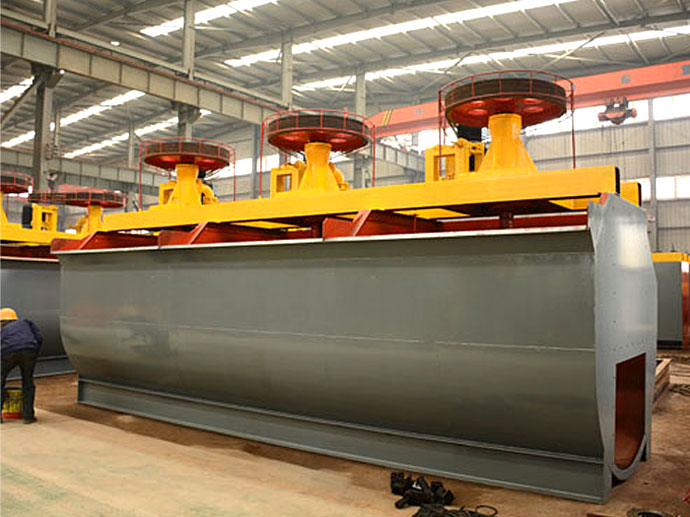Magnesite flotation process and equipment
 July.11,2024
July.11,2024
Magnesite flotation process is to use the difference in physical and chemical properties of magnesite and gangue minerals for sorting. Generally, reverse flotation and direct flotation are used alternately, that is, amine collectors are used to reversely float siliceous minerals, and then fatty acid collectors are used to directly float magnesite.
Combined with the ore properties, economic rationality and technical feasibility of magnesite, the magnesite flotation process is basically as follows: magnesite – jaw crusher – ball mill – flotation machine – concentrator – filter – dryer – metal magnesia sand. The flotation process varies from time to time according to the requirements of the final product.
From the perspective of magnesite beneficiation process, it specifically includes four steps.
Magnesite Crushing and screening stage
The crushing equipment used for magnesite crushing and screening is vibrating feeder, jaw crusher, circular vibrating screen and impact crusher. The vibrating feeder sends the magnesite raw material with a particle size less than 200mm to the jaw crusher for crushing, and then the impact crusher crushes it to a smaller particle size and enters the circular vibrating screen for screening. The particle size of 10mm that does not meet the grinding requirements re-enters the crusher to be crushed to 0-10mm.

Grinding and classification stage
Grinding and classification are very important for flotation. Grinding fineness is an important factor affecting the separation index. Appropriate grinding fineness can achieve effective dissociation of target minerals and gangue minerals. After crushing, the ore less than 10mm enters the ball mill for monomer dissociation. Two-stage grinding or three-stage grinding is often used. The grinding particle size requirement is 200 mesh accounting for more than 70%, which can achieve the best grinding fineness.
Flotation stage
The main beneficiation equipment used in the separation stage of the magnesium ore beneficiation process is flotation machine, mixer, and concentrator. The use of a single reverse flotation process cannot effectively remove impurities from the ore, and the magnesium oxide content of the selected magnesium concentrate is still as high as 0.35%. Therefore, the magnesium ore flotation process is generally composed of reverse flotation (one coarse and one sweep) and direct flotation (one coarse and one fine). Reverse flotation selects all tailings, and direct flotation obtains magnesium concentrate and middlings. Magnesite is ground into magnesite powder by a ball mill, and is sent to a mixer to mix with flotation agents, and then flotation and reverse flotation are carried out. In the concentrator, the mineral particles in the slurry form flocs to achieve the purpose of reducing moisture.

Drying stage
The dryer is the last step in the production of finished products. The equipment used is an industrial dryer. The water content of the coal after flotation is very high. After concentration, the water content is reduced, but it cannot be used for industrial use. Therefore, the dryer is used to completely dry the magnesium powder.
According to the different local raw materials, different processes are adjusted to achieve the optimal quality of the finished magnesium metal product.





